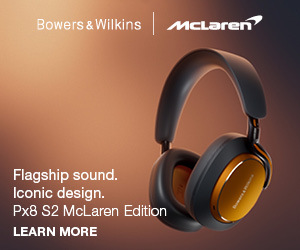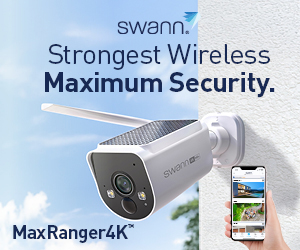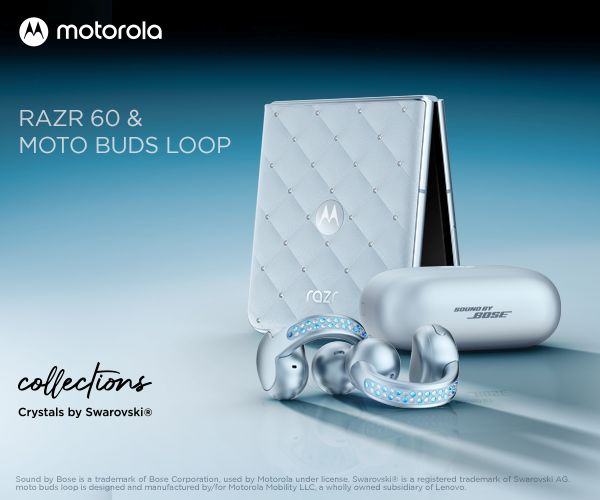The Nothing 3 is its definition of a flagship phone, and they got it mostly right. This is a powerful and quirky standout phone for the younger crowd. But why should they have all the fun?
If you have not heard of Nothing, it is a UK-based, youth-focused (Gen X, Y and Z) company founded by Carl Pei in 2020, who co-founded OnePlus (OPPO/BBK stable). Another founding partner is Teenage Engineering, primarily responsible for the brand’s design aesthetic and its products.
Design-wise, they are interesting, some may say polarising, and Nothing OS 3.5 (which is a value-added skin over Android 15) is a little different. But under the glass lies a pretty standard Qualcomm phone.
CyberShack analyses ‘speeds and feeds’, conducting over 70 tests and gathering 300 data points to write a detailed, 5,000-word review. Our readers want that, whereas Nothing’s primary audience would not know the differences between processors, screens, phone reception, and battery life. They look at the 1-minute TikTok or Instagram ‘reviews’ and that shallow recommendation is enough for them. Pretty shiny things. Read this review – yeah, nah.
Nothing 3 is their definition of a flagship
We define a flagship as:
- Current and reasonably powerful AI-capable processor ✅
- 10-bit AMOLED screen, low PWM-sensitivity ✅
- 12 or 16GB RAM ✅
- 256 or 512GB storage ✅
- USB-C Alt DP and external mountable storage ❌
- All-day battery and fast charge (no charger supplied) ✅
- Fast Wi-Fi 6E or 7 ✅
- City, Suburbs, regional and rural phone reception strength ✅
- eSIM and SIM, DSDA (dual active). Only DSDS (dual SIM, dual standby – only one active at a time). ❌
- Decent range of Bluetooth Codecs ✅
- Camera with wide, ultra-wide/macro and telephoto ✅
- Android 15 (or 16), value-added UI, and decent 2+5+7 warranty, OS upgrade and security patch policies ✅
- Price: in the same bracket as Samsung Galaxy S25+ or Pixel 9 Pro ✅
Nothing had to walk the fine line between specs and costs. For example, it uses some lower-cost components that don’t affect usability.
- Qualcomm Snapdragon 8s Gen 4 processor, which is pretty much equivalent to the 2024 SD8 Gen 3. Samsung use the 2025 SD8 Elite, which is the most powerful chip on the planet.
- The screen uses Gorilla Glass 7i versus Samsung’s harder and more drop-resistant Gorilla Glass Victus 2.
- Five OS upgrades and seven years of patches versus Samsung 7+7.
- USB-C 2.0 versus USB-C 3.2 Alt DP (no ALT DP and mountable external storage)
- 10-bit, low PWM, LTPS AMOLED (stepped frequency) versus Samsung’s 8-bit, high PWM, LTPO AMOLED (1-120Hz)
If it weren’t for the slow USB-C 2.0, which means no screen mirroring over a USB-C to HDMI cable and slow external storage, this could have easily been the 2025 phone of the year. Samsung also falls short in this regard and has an 8-bit screen.
Nothing 3 took two years to develop
Australian Review: Nothing 3 Model A024, SIM and eSIM, 16/512GB as tested
| Brand | Nothing |
| Model | Nothing 3. Note: We used Nothing 3 for SEO purposes |
| Model Number | A024 |
| RAM/Storage Base | 12/256 |
| Price base | 1509 |
| Price 2 | 16/512GB $1689 (as tested) |
| Warranty months | 24-months |
| Teir | Flagship |
| Website | Product page |
| Manual | Nothing (3) manual and OS guide |
| From | JB Hi-Fi, Nothing AU online Optus plans include no upfront costs and are available on 12-, 24-, or 36-month terms. |
| Country of Origin | China |
| Company | Nothing (Est. 2020) is a London-based company. Its founder was a co-founder of OnePlus (BBK/OPPO). |
| More | CyberShack smartphone news and reviews CyberShack Nothing news and reviews |
| Test date | July 2025 |
| Ambient temp | 6-17° |
| Release | July 2025 |
| Other models not for Australia (Don’t buy) | Only buy from Nothing Online, JB Hi-Fi or Optus. The rest are grey market. |
Ratings
We use the following ratings for many of the items below. CyberShack regards 70/100 as a pass mark. You can click on most images to enlarge them.
- Fail (below expectations), and we will let you know if this affects its use.
- Pass(able) rating that is not as good as it should be.
- Pass (meets expectations).
- Pass ‘+’ rating to show it is good, but does not quite make it to Exceed
- Exceed (surpasses expectations or is the class leader).
How to make the best use of this deep dive review
We tested over 70 different aspects and uncovered nearly 300 key data points about the device. Overall reviews can reach a few thousand words. So, if you are keen, this is the world’s most comprehensive review!
If you want to see our impressions only, they are listed at the beginning of each table. At the end, you will find CyberShack’s view, competitor analysis, and ratings. Ratings are based on the price bracket and expectations, so a $200 phone may score as well as a $2000 phone—we compare like with like.

First Impression – Interesting
Nothing makes glass slabs, and it is trying to rise above ‘boring. To some, the back panel is a work of art, and to some, it is not. Below the skin is a fairly traditional Qualcomm SD8s Gen 4 phone (one level below the 2025 Flagship SD8 Elite), featuring a superb screen, ample RAM/Storage (hint: buy the 16/512GB model for more futureproofing), an excellent camera, and pure Android overlaid with a quirky Nothing OS 3.5. Wrap this up in a 2+5+7 Warranty, OS and patch, and it gets our vote.
When we mentioned the compromises earlier, it helps you to decide what you need. For example, my daily drive is the 2024 Smartphone of the Year, the $999 Motorola Edge 50 Pro – an excellent upper-mid-range smartphone. It has a Qualcomm SD7 Gen 3 (I really don’t miss the SD8 Gen 3), USB-C 3.2 (a must for me for screen mirroring and mountable external storage), and a superb 10-bit pOLED screen. So far, no 2025 smartphones have passed all 15 criteria.
Its addition to boring black slabs is the Glyph matrix, which has the potential to provide helpful information without requiring the phone to be turned over. Nothing’s Essential Space button and features are pretty helpful and innovative.

Screen – Exceed
It is 6.7” of bright (1600 nits), colourful (10-bit/1.07 billion colours) LTPS AMOLED (Samsung, Apple and Google use 8-bit). It saves a few dollars by using LTPS and 60/90/120Hz stepping compared to Samsung’s LTPO AMOLED, which supports 1-120Hz, but who cares?
Where it beats Samsung et al. is that its screen has a PWM frequency of 960Hz and low depth modulation, making it PWM-friendly (Samsung’s screens are a headache-inducing 120/240Hz).
| Size | 6.67″ |
| Type | Flexible AMOLED LTPS (Not LTPO) |
| Flat, Curve, 2D, 3D | Flat with centre o-hole |
| Resolution | 2800 x 1260 |
| PPI | 460 |
| Ratio | 20:9 |
| Screen to Body% | 88.5% |
| Colours bits | 10-bit/1.07 billion colours True 10-bit – not 8-bit plus 2 FRC |
| Refresh Hz, adaptive | High: 120 Hz maximum Standard: 60 Hz Dynamic: 60/90/120 Hz |
| Response 120Hz | 1000Hz |
| Nits typical, test | Claim: 800 typical Test: 750 |
| Nits max, test | Claim: 1600 Outdoors Test: 1530 Claim: 4500 peak Test: Unable to test in 2% or 10% window, but it does support HDR10+ (not Dolby Vision) |
| Contrast | Infinite |
| sRGB | 100+% in standard and alive modes |
| DCI-P3 | 94% standard mode 110% Alive mode |
| Rec 2020 or other | N/A |
| Delta E (<4 is excellent) | <2 |
| HDR Level | HDR10/HDR10+ (no Dolby Vision). |
| SDR Upscale | No |
| Blue Light control | No |
| PWM if known | DC dimming at 50+% brightness. PWM frequency 960Hz below 50%. Should be fine for PWM-susceptible. |
| Daylight readable | Yes – exceptionally so |
| Always on Display | Yes |
| Edge display | No |
| Accessibility | Usual Android 15 |
| DRM | L1 SDR and HDR from some streaming platforms |
| Gaming | The processor power and screen response (<1ms GtG) are sufficient to play HD games up to 60fps. |
| Screen protection | Gorilla Glass 7i Mohs hardness 6 (average scratch resistance) |
| Comment | For the price, this flexible 10-bit AMOLED is a superb screen with excellent colour gamut and colour accuracy. It has DC dimming at <50% brightness. |





Processor – Excellent choice
Choosing a Qualcomm processor almost guarantees good performance and excellent phone reception. This is one step below the 2025 SD8 Elite used in the Samsung S25 Series, and we have included its performance benchmarks in brackets where applicable.
Using this processor helps shave more cost without any significant downsides.
| Type | Qualcomm SD 8s Gen 4 Benchmark comparison SD8s Gen 4 versus SD8 Elite |
| nm | 4nm TSMC N4P |
| Cores | 4 clusters 8 cores 1 x 3.21 GHz X4 2 x 2.8 GHz A-720 3 x 3.01 GHz A-720 2 x 2.02 GHz A-720 |
| GPU | Adreno 825 |
| Modem | 5G Modem-RF System 4 x 4 MIMO DSDS (Soc supports DSDA. Why is it not enabled?) 4.2 Gbps |
AI and speed tests – Pass+
As you can see, the SD8S Gen 4 is quite impressive and outperforms last year’s Samsung S24, which used the SD8 Gen 3. (SD8 Elite in brackets).
It is more than capable of on-device Google Gemini Nano, Circle to Search, and any Google AI, as well as its own AI helpers. If you’re looking to future-proof this, consider buying the 16GB Model.
| AI | Qualcomm Hexagon Geekbench AI CPU: 2500/2467/4008 (4571) GPU: 2012/3256/2726 (1749) NNAPI: 422/423/934 (1459) AiTuTu: 58,306 (66,443) AI Benchmark 6: 5,579 (10,536) GFLOPS: 23.88 (22.57) GINOPS: 28.65 (35.99) |
| AnTuTu | 1,944,795 (2,143,922) |
| Geekbench 6 Single-core | 2120 (3155) |
| Geekbench 6 multi-core | 6612 (9777) |
| Like | Similar to SD8 Gen 3 |
| GPU Test | |
| Open CL | 13264 (18729) |
| Like | Similar to SD8 Gen 3 |
| Vulcan | 18,835 (24183) Well above SD8 Gen 3 and Exynos 2400 at 15,500 |
RAM and Storage – Exceed
It has the fastest RAM and storage, with no bottlenecks. It will use external storage as cut and paste (OTG), but it is not mountable.
| RAM, type | 16GB LPDDR5X as tested Entry-level is 12GB |
| Storage, free, type | 512GB UFS 4.0 as tested (442 GB free) Entry-level is 256GB |
| micro-SD | No |
| CPDT internal seq. Read MBps sustained/peak | 1780 Mbps 3050 peak (3260) |
| CPDT internal seq. Write MBps sustained/peak | 761.47 Mbps 1040 peak (1360) |
| CPDT microSD read, write MBps | N/A |
| CPDT external (mountable?) MBps | Files finds it as an OTG for cut and paste, but not as a mountable device, and will not speed test. |
| Comment | This is an excellent choice, although not as powerful as the SD8 Elite in the Samsung S25 series. However, it is significantly more powerful than last year’s flagship, the 2023 SD8 Gen 3. Let’s just say there are no downsides. |
Throttle test – Exceed
Nothing has done an excellent job of thermal management of this ‘hot’ chip with an insignificant 13% throttle after 15 minutes of 100% load. It will be suitable for games and CPU/GPU-heavy tasks.
By comparison, the Samsung S25 Ultra SD8 Elite throttles terribly (over 50%), resulting in far lower sustained performance figures. The S25U figures in brackets were from a cold start (the best possible – they deteriorate from there).
| Max GIPS | 448795 (290,076) |
| Average GIPS | 409301 (206,325) |
| Minimum GIPS | 363523 (110,196) |
| % Throttle | 13% (49%) |
| CPU Temp | 96° (99) |
| Comment | The SD8s Gen 4 is a 4nm ‘hot’ chip, and Nothing has done a great job with thermal management, resulting in minimal throttling under our 100% load test for 15 minutes. |


Comms – Exceed for Wi-Fi and passable for USB-C 2.0. Nothing. Why did you do this?
This is the first Wi-Fi 7 device we have tested to feature the proper 4×4 MIMO and 320 MHz MLO support. The result is a spectacular near-maximum 6 GHz speed of 5,573 Mbps.
Add BT 6 (the first we have seen), complete set of Qualcomm aptX codecs (Samsung only has the free aptX), and LDAC/LDHC; this is excellent.
| Wi-Fi Type, model | Wi-Fi 7 2.4/6/6 GHz 4 x 4 MIMO 320 Hz MLO support |
| Test 2m -dBm, Rx/Tx Mbps | -36/3875 to 5573/3715 to 4804 |
| Test 5m | -47/3170 to 4804/3458 to 4003 |
| Test 10m | -52/1393 to 3843/2498 to 3587 |
| BT Type | 6 |
| GPS single, dual | 1 meter accuracy L1+L5 dual-band A-GPS, GLONASS, BDS, GALILEO, QZSS, NavIC and SBAS. |
| USB type | USB-C 2.0 480Mbps no Alt DP support |
| ALT DP, DeX, Ready For | No |
| NFC | Yes |
| Ultra-wideband | No |
| Sensors | |
| Accelerometer | Yes |
| Gyro | Yes |
| e-Compass | Yes |
| Barometer | |
| Gravity | |
| Pedometer | |
| Ambient light | Yes |
| Hall sensor | |
| Proximity | Yes |
| Other | X-Axis linear vibrator (haptics – all phones have this) In total, the physical sensors and SoC emulate 32 sensors. The S25U emulates 43. |
| Comment | Nothing has done a brilliant job with Wi-Fi 7 and MLO support, reaching maximum speeds. However, to be frank, it has done a terrible job with USB-C 2.0 on a flagship, where USB-C 3.1/2 Gen 1 or 2 is expected for USB-C to HDMI screen mirroring and mountable external SSDs. For this reason alone, it cannot be considered for our 2025 phone of the year. |




4/5G – City, suburb, regional and remote use – Pass+
While the SoC supports DDSA (dual SIM, dual Active), it, like the S25U, only appears to implement DSDS (dual SIM, dual standby). This could be as simple as a switch or a firmware update.
It performed better than the Samsung S25U. It has our tick for city, suburb, regional and rural use.
| LTE and 5G | 4/5G |
| SIM | Dual SIM plus e-SIM (maximum 2 SIMs) |
| Active | DSDS (Dual SIM, One active) |
| Ringtone single, dual | Single |
| VoLTE | Yes |
| Wi-Fi calling | Yes |
| 4G Bands | 1, 2, 3, 4, 5, 7, 8, 12, 17, 18, 19, 20, 25, 26, 28, 30, 34, 38, 39, 40, 41, 42, 48, 66, 71 |
| Comment | World phone |
| 5G sub-6Ghz | n1, 2, 3, 5, 7, 8, 12, 20, 25, 28, 30, 38, 40, 41, 48, 66, 71, 77, 78 – SA/NSA |
| Comment | World phone |
| mmWave | N/A |
| Test Boost Mobile, Telstra | |
| DL/UL, ms | 4G: 72.6/27.9/37ms – good 5G: Not enough signal |
| Tower 1 -dBm, fW or pW | 4G Band 3: -80 to -87/ 2 to 10 pW 5G: not enough signal |
| Tower 2 | 4G Band 28: -90/1 pW 5G: Not enough signal |
| Tower 3 | 4G Band 3 and 28: pW signal 5G: Not enough signal |
| Tower 4 | 4G 28: -79 12.6 pW 5G: Not enough signal |
| Indoors | fW usable signal |
| Comment | The Qualcomm modem detects all four towers, but likely due to antenna design, none are particularly strong. For example, Band 3 was always found at 2 to 10 pW and Band 28 at 1 to 12 pW. |

Battery – Pass
India gets a 5,500mAh Si/C anode battery, whereas we get a standard 5,150mAh lithium-ion pouch battery. So, if you read international reviews, please disregard their battery tests.
Fast charging takes 53 minutes at 9V/5A/45W using an Anker 140W GaN charger and a 5W cable. We were unable to get higher rates.
The SoC and screen chew up the power under load and full brightness, giving a 3-4 hour screen-on time. Typical uses will get 18-24 hours.
But at 53 minutes charge, who cares?
| mAh | 5150 mAh 3.86V/5.15A/19.88W standard Lithium Polymer pouch battery. India gets a 5,550 mAh Si/C anode battery that fits into the same space with a claimed 1,400 complete battery charge cycles. |
| Charger, type | Not supplied. 65W capable (the maximum we could get was 45W) |
| PD, QC level | PPS / PD3.0 / PD2.0 / QC4.0 / QC3.0 / QC2.0 / DCP / SDP / CDP / UFCS |
| Qi, wattage | 15W Qi |
| Reverse Qi or cable | 5W reverse Qi 7.5W reverse cable |
| Test (screen 60Hz or adaptive) | 60 Hz |
| Charge % 30mins | Claim: 72% |
| Charge 0-100% | Test: 53 minutes at 9V/5A/45W using Anker 140W GaN. Other chargers supplied 9V/3A/27W and 9V/4A/36W. |
| Qi, Belkin Boost charge 15W | Estimate 3-4 hours |
| Charge 5V/2A/10W | Estimate 5 hours |
| Video loop 50%, aeroplane mode | 26 hours 27 minutes. This is a ‘gamed’ result. See * |
| PC Mark 3 battery | 18 hours Accubattery 17 hours 49 minutes |
| GFX Bench Manhattan battery | Would not run |
| GFX Bench T-Rex | 786.6 minutes (13.13 hours) 3376 frames |
| Drain 100-0% full load screen on | 3 hours 18 minutes Accubattery 4 hours 57 minutes |
| mA Full load screen on | 3000-3050 100% brightness 2450-2500 50% brightness |
| mA Watt idle Screen on | 550-600 100% brightness 250-300 50% brightness |
| Estimate loss at max refresh | 20% |
| Estimate typical use | This SoC uses a lot of power, and the screen brightness is a battery sucker. Given PC Mark and Accubattery largely concur that 18 hours is a typical use, you should easily get through a day. Power users may only get 3 to 5 hours. But at 53 minutes for a full recharge, who cares? |
| Comment | * New AI processors ‘game’ video loop results by disabling all phone functions, effectively turning the device into a media player. We can no longer use this as an effective measurement of screen-on time. |
Sound hardware – Pass+
It does not decode Dolby Atmos, but will try to emulate spatial sound. It does not have an EQ, which saves costs.
On the plus side, it features a comprehensive suite of Qualcomm BT Codecs, as well as 24-bit/48000Hz LDAC and aptX Adaptive high-resolution audio.
It gets very loud too – nearly 85dB, so it’s great for hands-free.
| Speakers | Forward-firing Earpiece and down-firing bottom speaker |
| Tuning | N/A |
| AMP | 2 x TFA98 5.6W, THD 1% We wonder why it did not use the standard Qualcomm Aqstic Amp and decoder, but it becomes clearer as you see that it does not decode Dolby Atmos, saving a licensing fee. |
| Dolby Atmos decode | No |
| Hi-Res | No |
| 3.5mm | No – requires an external DAC to use wired headphones. |
| BT Codecs | SBC, AAC, aptX, aptX HD, aptX Adaptive, LDAC, LDHC CV3/5 24-bit 48000 Hz. |
| Multipoint | Yes |
| Dolby Atmos (DA) | No decoder. Spatial Audio is only for headphones. |
| EQ | No |
| Mics | 2 – one top and one bottom. One is for noise cancelling. |
| Test dB – all on EQ flat DA off | |
| Volume max | 84.9 |
| Media (music) | 82.6 |
| Ring | 84.2 |
| Alarm | 87.2 |
| Notifications | 82.9 |
| Earpiece | 60 |
| Hands-free | Dual mics work OK. Lots of volume for calls. |
| BT headphones | The Qualcomm Aqstic audio, featuring a wide selection of codecs and 24-bit processing, makes this a suitable device for use with headphones, especially LDAC-compatible ones. |
Sound quality – our very first Pass+
I don’t know how Nothing achieved this with micro-speakers (used by everyone else), but it is the most listenable sound that I can recall.
It has just enough high bass and mid treble to supplement a perfectly flat response (good) to make music fun again.

It’s a shame that there’s no software EQ, as this is precisely the sound signature that works well with one.
| Deep Bass 20-40Hz | Nil |
| Middle Bass 40-100Hz | Nil |
| High Bass 100-200Hz | Quick climb to 400 Hz |
| Low Mid 200-400Hz | Quick climb to 400 Hz |
| Mid 400-1000Hz | Flat to 11 kHz – amazing |
| High-Mid 1-2kHz | Flat to 11 kHz – amazing |
| Low Treble 2-4kHz | Flat to 11 kHz – amazing |
| Mid Treble 4-6kHz | Flat to 11 kHz – amazing |
| High Treble 6-10kHz | Flat to 11 kHz – amazing |
| Dog Whistle 10-20kHz | Decline to 15 kHz then flat |
| Sound Signature type | This is close to neutral (good), lacking only in low and mid bass and high treble. It is a Bright Vocal signature with just enough high bass to satisfy – amazing. |
| Soundstage | As wide as the phone. DA and spatial content do not give any 3D height or surround. Balanced sound from both speakers. |
| Comment | How to tell if you have good music – sound signature is the key (AV guide) |
Build – Exceed
It is very Applesque with its straight sides and rounded corners. The build quality is excellent, as is the repairability. Where it has shaved costs is the use of Gorilla Glass 7i (instead of Victus 2).
Please take the time to view the teardown video.
| Build | |
| Size (H X W x D) | 160.6 x 75.59 x 8.99mm |
| Weight grams | 218 |
| Front glass | Gorilla Glass 7i for mid-range phones. One meter drop resistance and Mohs 6 hardness. |
| Rear material | 2.5D transparent tinted Glass revealing a faux ‘insides’ sticker. The glyph interface has been updated to a circular LED display. |
| Frame | Aluminium |
| IP rating | IP68 |
| Colours | White Black |
| Pen, Stylus support | No |
| Teardown | Considered highly repairable. |
| In the box | |
| Charger | No |
| USB cable | 3W |
| Buds | No |
| Bumper cover | Yes |
| Comment | Use any PPS or PD charger >45W and a 5A cable for maximum charge speed. |
Android – Almost pure – Pass+
Nothing has overlaid pure Android 15 (upgrade to 20) with its Nothing OS 3.5. The latter is quirky like its phone design with different iconography, but in the end, it’s easy to learn.
In fact, a 70-year-old, non-tech-savvy lady and former owner of a Samsung S21 Ultra bought the Nothing (3a) Pro on my recommendation, and her partner purchased the Nothing (3a) and was using it fully within days. They love Nothing, so why let the young ones have all the fun?
| Android | Android 15 |
| Security patch date | 1 June 2025 current |
| UI | Nothing OS 3.5 |
| OS upgrade policy | 5 |
| Security patch policy | 7 |
| Bloatware | It is very clean – 10 points! You can use all standard Google apps, as well as some alternative options. Those accustomed to Android’s standard icons may need to relearn Nothing’s iconography—a relatively easy task. |
| Other | Glyph is now a circular 489-LED matrix with a Glyph button, various Glyph readouts, and Glyph toys. It represents the biggest change from the Glyph light bars of previous models, and some Nothing aficionados are not happy. New users should find it useful. |
| Essential Key | Long-press record voice. Double-press to access Essential Space. AI organises your captures and generates personalised suggestions and actions to help you stay on top of things. • Recording Function: The audio will be automatically saved to Essential Space. The system will intelligently extract key information, generate summaries, and transcribe the audio into text to help you organise your thoughts. • Screenshot: Capture a quick screenshot. • Voice Memo (Post-Screenshot): After taking a screenshot, continue holding the Essential Key, and begin speaking to add voice notes directly to the captured content or ask questions about it. • View Records: Double-tap the Essential Key to quickly open Essential Space and access your recent recordings and screenshots There are additional features when using a Nothing Account. |
| Security | |
| Fingerprint sensor location, type | Goodix under glass |
| Face ID | 2D |
| Comment | I enjoy using Nothing OS 3.5. At first, I thought it a bit ‘wanky’ with its dot matrix printer fonts and icons, but much thought has gone into adding value to Android 15 and beyond. |

Nothing 3 rear camera – Pass+
While the Samsung S25U boasts a 200MP wide camera, it bins to 12.5MP, just like every 50MP camera does. Like Samsung, it also features a 50MP ultrawide camera. Samsung has a slight edge with a combo 13MP and a 50MP telephoto camera.
The screen preview colours are accurate (Samsung is not) and I can’t fault them. The camera app is basic but sufficient. It uses Google Photos for storage, and all the Google editing features are available.
OIS is good and still, and videos are quite shake-free, but we recommend video at 1080p to be sure.
Test photos
The test photos will tell the story, but let’s say that I can’t fault them.













Camera specs
| Rear Primary | Wide |
| MP | 50MP bins to 12.5MP |
| Sensor | Omnivision OV50h |
| Focus | PDAF |
| f-stop | 1.68 |
| um | 1.2 bins to 2.39 |
| FOV° (stated, actual) | 73.5 to 86 |
| Stabilisation | OIS and Qualcomm EIS |
| Zoom | 2X digital lossless (crop) and 8X digital |
| Rear 2 | Ultra-wide/macro |
| MP | 50MP bins to 12.5MP |
| Sensor | Samsung S5KJN1 |
| Focus | Fixed |
| f-stop | 2.2 |
| um | .64 bins to 1.28 |
| FOV (stated, actual) | 114 |
| Stabilisation | No |
| Zoom | No |
| Rear 3 | Telephoto |
| MP | 50MP bins to 12.5MP |
| Sensor | Samsung S5KJN5 |
| Focus | Auto focus |
| f-stop | 2.68 |
| um | .64 bins to 1.28 |
| FOV (stated, actual) | N/A |
| Stabilisation | OIS and EIS |
| Zoom | 3X optical and 60X AI |
| Special | The camera app is basic. Night mode is automatic. Photo, portrait, video, and slow-motion options, as well as time-lapse, panorama, and expert modes. It uses Google Photos as the storage. |
| Video max | 4K@60 |
| Flash | Single |
| Auto-HDR | Yes |
| TrueLens Engine 4 Ultra XDR Auto Tone Portrait Optimiser Motion Capture Mode Night Mode Macro Mode Action Mode | |
| QR code reader | Yes |
| Night mode | Yes |
| DXO Mark | No |
| Comment | Nothing has nailed the tri-camera setup with a decent 50 MP (Wide) + 50 (Ultrawide) and 50 (Telephoto). All work very well, and AI processing is good without being overpowering. All bin to 12.5MP by default. |
Nothing 3 selfie
We don’t publish selfie photos due to ID Theft reasons. As far as we are concerned, the skin tones, brightness, dynamic range, and details are great. Unfortunately, it’s a fixed-focus lens, so you need to be a little more careful with your shot composition.
It records 4 K at 60fps but lacks OIS and EIS, which the rear cameras have.
| Front | Selfie |
| MP | 50MP bins to 12.5MP |
| Sensor | Samsung SK5JN1 |
| Focus | Fixed |
| f-stop | 2.2 |
| um | .64 bins to 1.28 |
| FOV (stated, actual) | 71.8 to 84.3 |
| Stabilisation | No |
| Flash | Yes |
| Zoom | Crop Factor 6.6 |
| Video max | 4K@60 |
| Comment | The 50MP selfie is excellent. |
CyberShack’s view: Nothing 3 has aced most of the flagship criteria
No, it’s not the Uber flagship, but it’s pretty damned good, and frankly, no smartphones this year have met our criteria for phone of the year.
Samsung buyers are generally loyal, so I don’t expect many to jump ship. However, Nothing 3 demonstrates that a new startup utilising third-party manufacturing and supply chains can produce an excellent phone at an even more competitive price.
Damn you, Nothing – all it needed was USB-C 3.2 to win!
Competition 12/256GB $1509 and 16/512GB $1689
- $1687 Samsung Galaxy S25+ 6.7” 8-bit AMOLED, 12/256GB, Qualcomm SD8 Elite, USB-C 3.2 Alt DP but no support for mountable drive. eSIM
- $1687 Google Pixel 9 Pro 6.7” 8-bit AMOLED, 12/128GB, Tensor G3. USB-C 3.2 Alt DP, but no support for mountable drives. eSIM
- $1599 2024 ASUS Zenfone 11, 12/256GB, 10-bit, AMOLED, SD8 Gen 3 (USB-2.0), No eSIM.
- $1799 2025 ASUS ROG 9, 12/256GB, AMOLED, SD8 Elite. No eSIM (should be full USB-C 3.2)
Overall, Nothing 3 stacks up very well.
Nothing 3 Ratings
| Ratings | Pass is 70/100 |
| Features | 90 |
| It has everything you need, but throw in the 10-bit AMOLED and Telephoto camera, and it becomes one of the most fully-featured phones at this price. | |
| Value | 90 |
| At $1,509/1,689, it is a class leader, but several subtle down-engineered specs contribute to its achievement. None are particularly deal breakers. | |
| Performance | 90 |
| It features a Qualcomm SD8s Gen 4 processor, which is all you need for daily use and productivity. Considering you would have to spend more for an SD8 Elite processor, this is all you need—and then some. | |
| Ease of Use | 90 |
| Once you get used to Nothing OS 3.5 and its iconography, it is easy. Pure Android 15 with a quirky font! AI is not shoved down your throat, but it is there with Google Gemini and its on-device and on-cloud features. Add a 2-year warranty, 5 x OS upgrades, and 7 years of security patches, and you cannot go wrong. | |
| Design | 85 |
| I don’t mind the design language – you are either going to love it or hate it. | |
| Rating out of 10 | 89 |
| Final comment | Throughout the test, I kept asking how Nothing could offer such features at such a reasonable price and continued to look for the downsides. There are not many, and practically no deal breakers. |
CyberShack Verdict
Nothing (3)
12/256GB $1509 and 16/512GB $1689












8 comments
Mark
Excellent review. It offers a well balanced perspective that thoughtfully covers the key aspects of what makes a good device. I particularly like the opinions expressed after each analysis. It’s particularly refreshing reading a positive review on this phone.
Ray Shaw
Hi Mark. Many thanks for the positive review of our review. You know it irks me when bloggers, influencers and superficial Australian tech sites are paid to promote Nothing and know F’all about the phone. CyberShack is now one of the few remaining deep-dive global sites, and we try to offer information you cant get elsewhere. And its a great phone!
Mark
Absolutely, and I completely agree, it’s getting harder and harder to find reviews that actually dig in and provide meaningful insights rather than just rehashing marketing points. Specially now that Google search engine is very bad. I’m glad i’ve foind yours as it really stands out in that sense; it’s clear there’s genuine testing and experience behind every observation.
By the way, I wanted to ask your opinion on something: would you personally recommend going for the 12 GB or 16 GB RAM version? The article mentions the 16 GB model as being better for “future-proofing,” but I’m still on the fence about whether the difference is noticeable in day-to-day use.
Ray Shaw
The 12GB is fine for day-to-day use, but it will be more limiting as AI moves forward. 16GB gives the RAM overhead for at least a few more generations of AI.
Gerry
Still no user-replaceable battery, huh? With the EU directive for all phones to have user replaceable batteries, coming into effect in Feb 2027, one wonders when we will see —finally— a return to easily swappable batteries
Ray Shaw
I look forward to that day too.
Frank
Hello, If tower 4 is the furthest away in kilometers, and it is the same site test used in Oppo 14F, it means that this cell phone (Nothing) has scored almost 10 points positive than Oppo 14F on that same tower. If confirmed, I think it is more useful to have more power on a more distant tower.
Ray Shaw
Yes, you are correct, although it is a little more complex than that, and the two phones have very different prices.